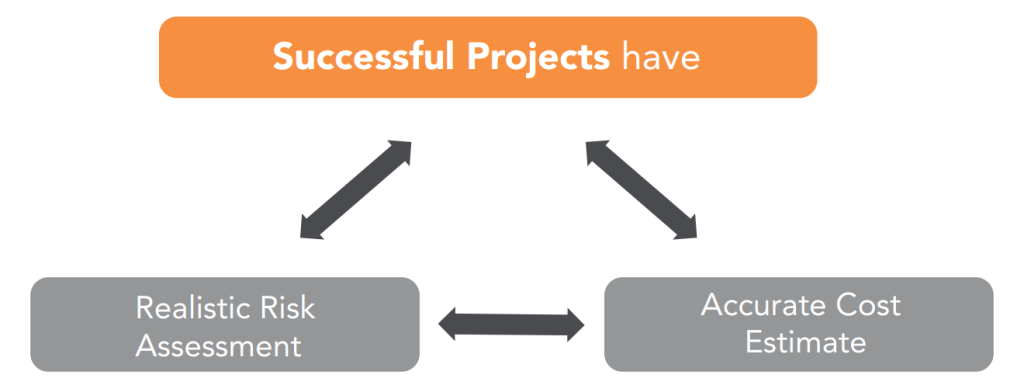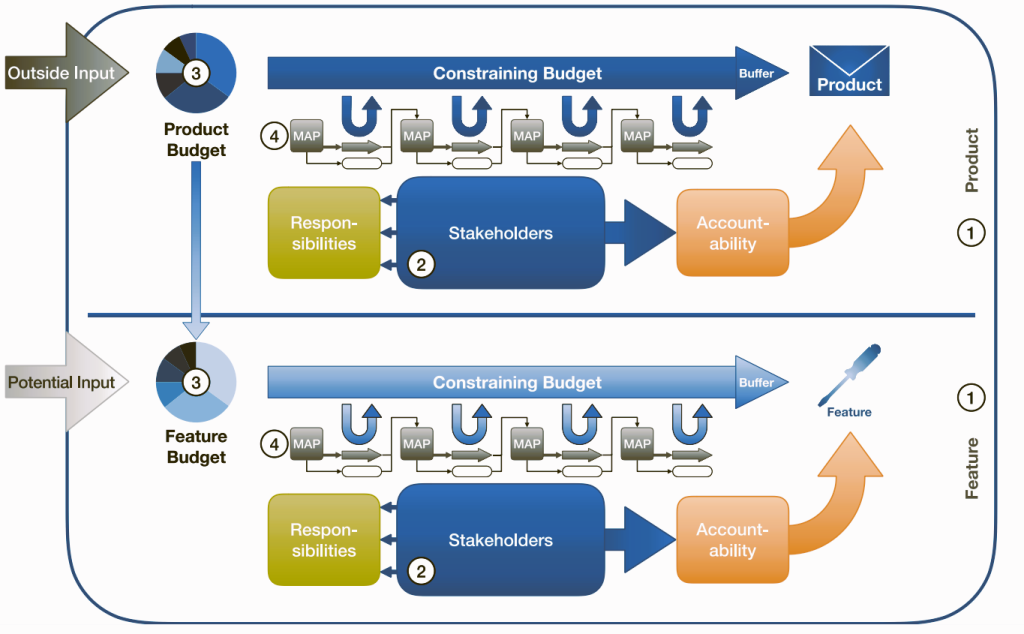Naturally, the same principle applies to individual projects. When a project’s Budget Breakdown is managed effectively, its chances of being considered successful increase significantly.

However, not all expenses are easy to identify. Some are obvious and straightforward, while others are harder to pinpoint. A critical factor in planning costs is the financing method chosen. Every project relies on a mix of funding options, and the final approach varies across organizations and initiatives. A clear Budget Breakdown helps clarify these financial pathways.
How Budget in Product Development Affects Each Stage
Building on this foundation, let’s explore how a Budget Breakdown directly influences the product development process. A well-structured Budget Breakdown is the backbone of every initiative. Each stage – from design to market launch – depends on careful allocation and oversight of financial resources.
- Design Quality and Materials Your Budget Breakdown determines the quality of materials and design features. A larger budget enables premium materials and advanced solutions, while a smaller one may require compromises.
- Prototyping and Testing Prototyping validates designs but can be costly. Limited budgets may restrict the number of prototypes or test rounds, increasing the risk of launching a flawed product.
- Technology and Innovation Innovative features often demand investment in R&D and advanced technologies. A constrained budget can limit the ability to incorporate cutting-edge solutions.
- Development Timeline Tight budgets may lead to rushed development cycles that compromise quality. Adequate funding allows for thorough testing, iteration, and refinement.
- Manufacturing Processes Production methods depend heavily on available funds. High-precision techniques like CNC machining or injection molding may be unaffordable with limited resources.
- Market Readiness Proper budgeting ensures resources for marketing, packaging, and distribution. Underestimating these costs can delay or derail product launches.
Innovation and Cost Pressures in a Competitive Economy
Transitioning from internal processes to external realities, it’s clear that Budget Breakdown plays a vital role in maintaining competitiveness.
In today’s global economy, even market leaders struggle to achieve growth through innovation alone. Rising cost pressures are pushing companies to reduce spending on incremental innovation – small improvements to existing products – and redirect funds toward breakthrough innovation – radical advances that open new markets.
Yet, breakthrough innovation carries substantial risks. To manage these effectively, organizations must develop strategic product value management capabilities that integrate budgeting, cost control, and innovation strategy.
Budget Breakdown. Understanding Product Cost Estimation
Expanding on this perspective, an accurate Budget Breakdown and cost estimation become essential. Manufacturing a product or constructing a building is complex, and determining its price is equally challenging.
Project managers rely on a Cost Breakdown Structure (CBS) to organize expenses systematically. In early development stages, estimation methods may be underdeveloped, making accurate forecasting difficult. This uncertainty can lead to overlooked material costs or unexpected investments.
For startups, these budgeting missteps can be especially damaging. Misjudged expenses can compromise quality, extend timelines, and create financial strain.
To overcome these challenges, companies must use cost estimation as a bridge between creativity and financial reality. A structured Budget Breakdown connects customer expectations with business viability, enabling smarter resource allocation and sustainable profitability.
Stages of the New Product Development (NPD) Process
To see this in practice, let’s walk through the stages of the NPD process and examine how Budget Breakdown supports decision-making at each step:
- Idea Generation – Identifying opportunities based on market trends, customer needs, and technology.
- Concept Development and Evaluation – Assessing feasibility, profitability, and strategic fit.
- Business Analysis – Conducting financial and risk assessments.
- Product Design and Development – Turning concepts into prototypes while managing design and production costs.
- Testing and Validation – Collecting customer feedback and verifying performance.
- Commercialization and Launch – Scaling production, marketing, and distribution effectively.
Throughout these stages, cost analysis and Budget Breakdown ensure that decisions align with both financial and strategic goals.
What Is a Cost Breakdown Structure (CBS)?
From a technical standpoint, a Cost Breakdown Structure (CBS) is the central framework for managing a project’s financial aspects.
CBS builds upon the Work Breakdown Structure (WBS), which outlines deliverables and tasks. CBS complements this by linking costs to each task or deliverable, creating a comprehensive view of total project expenses.
By systematically identifying, categorizing, and allocating all project-related costs – labor, materials, equipment, overhead, and contingencies – CBS ensures that no expense is overlooked. This structured Budget Breakdown keeps projects financially transparent and on track.
Purpose and Advantages of a Cost Breakdown
Moving from definition to application, CBS delivers numerous benefits. It strengthens financial transparency, fosters accountability, and ensures efficient resource utilization.
Key Benefits of a Structured CBS:
- Accurate Budgeting – Establishes realistic financial targets and prevents overspending.
- Informed Decision-Making – Assesses financial impact and reallocates resources when necessary.
- Simplified Expense Monitoring – Detects cost variances early.
- Enhanced Communication – Promotes transparency across teams and stakeholders.
- Future Planning – Provides data for forecasting and continuous improvement.
A strong CBS framework anchors your Budget Breakdown, ensuring financial stability and long-term project success.
Core Elements and Categories of Project Costs
To build a comprehensive view, let’s examine the fundamental cost categories shaping every Budget Breakdown:
- Labor Costs – Salaries, benefits, and overtime.
- Material Costs – Raw materials, supplies, and transportation.
- Equipment Costs – Purchases, rentals, and maintenance.
- Overhead Costs – Utilities, office space, and administrative services.
- Contingency Costs – Reserves for delays, price changes, and design modifications.
- Soft Costs – Permits, legal fees, insurance, and consulting.
- Logistics Costs – Shipping, warehousing, and travel-related expenses.
Categorizing these areas within your Budget Breakdown creates a detailed roadmap for tracking every dollar spent.
Budget Estimate Types
Transitioning to the practical side of planning, accurate estimates are the next step in building a dependable Budget Breakdown.
There are three main types of budget estimates across a project’s lifecycle:
- Rough Order of Estimate (ROE) – Early-stage approximation to gauge feasibility, with a variance of -25% to +75%.
- Contract Estimate – Developed later, often using data from similar projects or donor requirements.
- Definitive Estimate – The most precise type, created during detailed planning using the WBS for exact cost tracking.
These estimates evolve as more information emerges, refining the overall Budget Breakdown for maximum accuracy.
Contact us today to learn how LA NPDT can assist in realizing your project.
Structured Agile Budgeting Core Process (SABP)
In adaptive environments, companies employ the Structured Agile Budgeting Core Process (SABP) to introduce flexibility into financial planning. It includes:
- Multi-Level Budgeting (MLB): Level Structure
- Agile Responsibility Model (ARM)
- Multi-Level Budgeting (MLB): Budget Structure
- Extended Partial Budgeting Process (exPBP)
This agile framework integrates adaptability into the Budget Breakdown, enabling organizations to respond quickly to changes without losing financial control.

Figure 1. Structured Agile budgeting core process (SABP). Source: https://www.researchgate.net/publication/334717713_Budgeting_for_Agile_Product_Development
Hidden Costs in Product Development
Despite careful planning, even the most well-designed Budget Breakdown can be undermined by hidden costs that erode profitability. These typically fall into three categories:
- Incomplete Project Proposals
- Misaligned Expectations
- Scope Creep
Each of these factors increases risk and uncertainty. To mitigate them, organizations should maintain open communication, validate assumptions early, and document all project changes thoroughly. Partnering with experienced development teams also ensures transparency and control.
Six Strategies for New Product Development When Budgets Are Tight
Finally, when resources are limited, applying a disciplined Budget Breakdown becomes even more critical. The following six strategies help sustain innovation while managing financial constraints:
- Align innovation with company strategy
- Reassess risk tolerance
- Rebalance the product portfolio
- Repurpose existing innovations
- Leverage product refactoring
- Adopt a robust innovation management system



